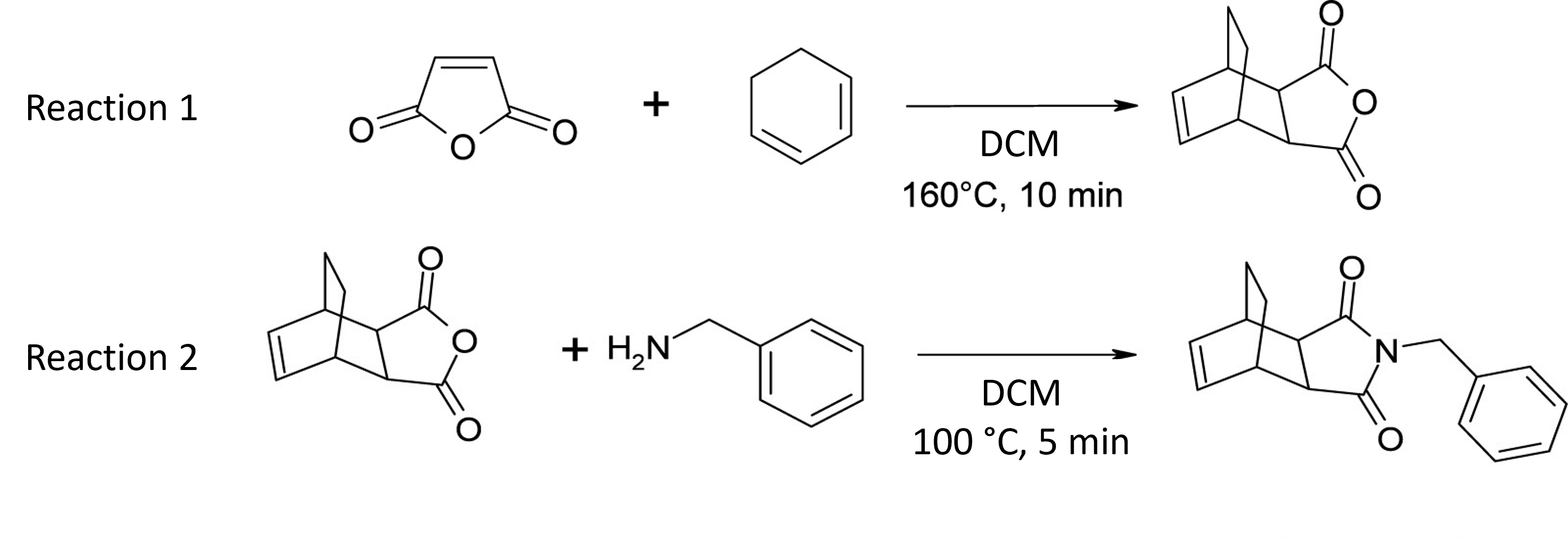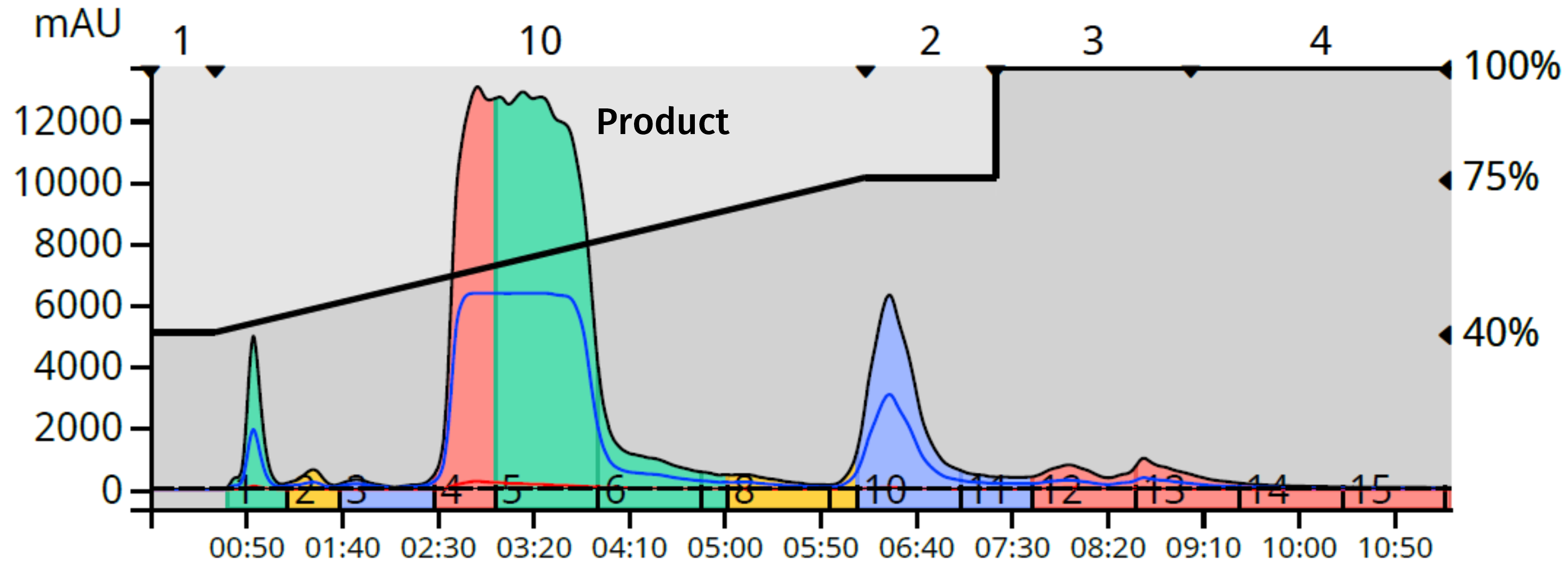Mar 27, 2023 3:44:19 PM
How to improve synthesis workflow by over 90%
By Bob Bickler

Synthesis workflow is the journey taken by chemists when creating a molecule. This journey can be like taking the interstate with no traffic lights and higher speed limits but usually this trip is more like taking backroads with slower speeds, stop signs, and sometimes detours. I believe most chemists prefer the highway rather than the local route but perhaps don’t have the infrastructure to get to their destination as efficiently as desired.
The synthetic journey length depends upon a number of factors…- -Number of reactions required to make the final compound
- -Synthesis complexity (temperature, pressure, duration, catalysts, solvent, etc.)
- -Work-up and purification (and their challenges)
and often requires repeating each of the steps, Figure 1.

Figure 1. Typical synthesis workflow.
If we equate the local travel route to the typical synthesis workflow “infrastructure”, it would look something like this…
-Hot plate or water/oil bath
-Rotavap
-TLC and/or HPLC
-Glass column with silica for purification
The interstate infrastructure, however, looks like this…
-Microwave synthesizer, e.g., Biotage® Initiator+
-High-speed, compact solvent evaporator, e.g., Biotage® V-10 Touch
-TLC and/or HPLC
-Automated flash purification system, e.g., Biotage® Selekt
So, how does the “interstate” model speed workflow by more than 90%? Well, it is a well-known fact that synthesis rates just about double for each 10°C increase in reaction temperature (remember the Arrhenius equation?), Equation 1.
![]()
So, based on the Arrhenius equation, a room-temperature reaction requiring 12 hours to complete would be finished in 5 minutes with a microwave at 100°C. Likewise, a reaction performed at 70°C needing 16 hours to complete with a hot plate or water/oil bath is done in 5 minutes with a microwave at 150°C. While not all reactions can be completed in 5 minutes with a microwave, the ability to perform reactions at higher temperatures and pressures than with conventional synthesis techniques really does speed the workflow.
Synthesis, however, is just one leg of our journey. We still need to verify we made the right molecule and purify it. Often, purification is a two-part process…
1. Evaporate the reaction solvent if incompatible with the developed flash purification method
2. Flash chromatography followed by solvent evaporation
While rotavaping can be quick with volatile solvents, those with higher boiling points can be difficult or even impossible to evaporate. Likewise, manual glass column chromatography can require hours to prepare and run adding more time to the synthesis journey. So, what do the numbers say about jumping onto the synthesis workflow interstate versus the local route?
Well, a colleague of mine, Bill McRea, Ph. D., who is a very experienced medicinal chemist, and I decided to compare the workflow of a 2-step reaction using state-of-the-art instrumentation to his experience with conventional techniques for similar reactions.
Our synthesis was a 2-step Diels-Alder reaction of maleic anhydride and 1,3-cyclohexadiene, followed by the reaction product’s acylation with α-methylbenzyl amine, Figure 2.
 Figure 2. 2-step Diels-Alder reaction used for this study.
Figure 2. 2-step Diels-Alder reaction used for this study.
The first reaction went to completion in 10 minutes with the microwave and required no further purification other than to remove excess cyclohexadiene and the DCM reaction solvent (11 minutes) for a total time of 21 minutes (synthesis + evaporation). Non-microwave synthesis requires about 12 hours at 90°C to complete with another 30 minutes for evaporation (12.5 hours total), a time savings of 12+ hours with automated instrumentation!
The second reaction required only 5 minutes with the microwave versus a typical 60 minutes at 25°C using conventional heating. This reaction did create by-products and was purified with reversed-phase flash chromatography with a 12-gram Biotage® Sfär C18 column using a Biotage Selekt system and dry loading, Figure 3. This purification process required a total of 22 minutes including the dry load preparation; fraction evaporation needed 60 minutes (43-mL fraction volume). Using a non-automated process typically requires an hour for purification (if you can get reversed-phase flash to work) and another 12 hours to evaporate the solvent from the product fraction (13 hours total). Automated evaporation and purification reduced workflow time for step two of the reaction by 13 hours!

Figure 3. Reversed-phase flash purification of reaction 2.
Finishing the comparison, the 2-step reaction synthesis workflow using state-of-the-art equipment required a total of 1.75 hours to complete versus 25 hours with a hot plate or oil/water bath, rotavap, and manual flash chromatography. All in all, taking the “express” synthesis route with a microwave synthesizer, high-speed solvent evaporator, and automated flash chromatography system reduced workflow over 90% compared to taking the “local” synthesis route.
Just think about how increasing your workflow efficiency can improve your productivity and, of course, your career trajectory!
Interested in learning more, visit our website.
[1] Arrhenius equation | Definition & Facts | Britannica
Published: Mar 27, 2023 3:44:19 PM

